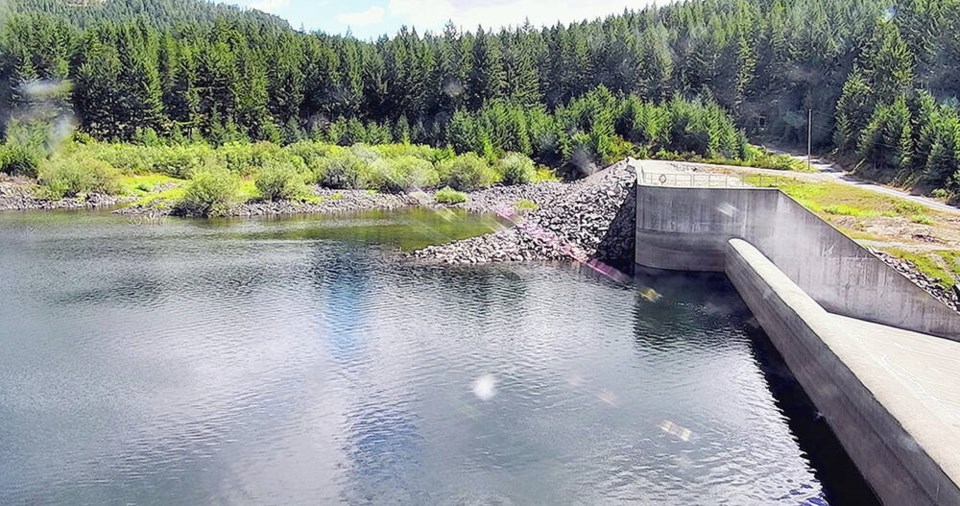The office responsible for ensuring Greater Victoria has a supply of potable water is recommending that the Capital Regional District continue planning to build a $1.1-billion water-filtration plant.
Island Health medical health officer Mike Benusic told the CRD’s water commission that even if it does not end up supplementing the Sooke Lake Reservoir with water from the Leech River, planning for a filtration plant should continue because of the effects of climate change and to ensure a safe supply.
Benusic was asked by Alicia Fraser, the CRD’s general manager for integrated water systems, to address the commission and comment on the need for filtration outlined in the regional water master plan.
Concerns have been raised over the cost of the master plan and its $1.1 billion centrepiece, a water filtration plant.
A consultant’s report done for the Urban Development Institute raised concerns about the plan’s cost and impact to taxpayers and developers, and questioned the amount of consultation done for the master plan.
The institute estimated the plan would add $9,044 in development cost charges for each new single-family home and $7,914 per townhouse and duplex, which would be passed on to the buyer.
Benusic noted medical health officers are the designated “drinking water officers” who approve and provide operating permits to water suppliers such as the CRD, and do so guided by federal rules.
He said the guidelines recommend filtration and one form of disinfection be used to meet treatment objectives, or that two forms of disinfection such as chlorination and ultra-violet disinfection may be considered in some cases.
Benusic noted the CRD has a filtration exemption due in part to low turbidity levels — a measure of the suspended solids within water — but that would change if the Leech River is added to the system.
“It’s quite concerning to me that this watershed, if introduced into the existing Sooke Lake Reservoir, and the existing Greater Victoria water-supply system, would lead to turbidity excursions that could have pretty dramatic downstream effects and a need for boil-water notices,” he said. “So my requirement as the drinking water officer is that there would need to be filtration of the Greater Victoria water supply system.”
Benusic noted storms are expected to be become more intense, which increases water volume and can cause turbidity, while the changing climate is raising reservoir temperatures, which increases the probability of algae blooms.
He said at this point there is no need for filtration.
“As implementation of filtration takes years of planning and construction, it is prudent to plan now in order to implement before turbidity events occur, as these would have substantial impacts on all who rely on the Greater Victoria water supply system,” he said.
The CRD’s water supply master plan, approved by the board in 2022, is a 30-year roadmap for the region’s water supply that includes 22 water infrastructure projects that come with a price tag of more than $2 billion.
The plan guides water-supply planning and includes an infrastructure program to improve the supply and transmission system and add redundancy to critical components to address hazards and risks.
It dictates steps the CRD must take to handle population growth, the impacts of climate change, water treatment requirements resulting from changing raw-water quality and regulatory requirements.
In bringing the commission up to speed, Fraser said paying for the plan will come down to increasing water rates, but she noted there could be grant money from senior governments and they are working on establishing a new development cost charge for developers tying into the system.
The commission will consider a report on those charges this month. Fraser suggested the charges could offset as much as 30 per cent of the master plan’s costs.
Fraser stressed the projects included in the master plan are subject to further consultation and engagement before they become realities with detailed designs and budgets.
She provided updates on anticipated water demand and system capacity, noting the combination of moderate population growth estimates and expected annual demand suggests future demand will be about 74 million cubic metres per year by 2050. Last year, the system used 51.3 million cubic metres.
At this point, Sooke Lake Reservoir is able to supply about 67 million cubic metres per year. In the short term, there is sufficient water supply but there is limited ability to support growth beyond 2045, she said. “An additional water source will be required along with new infrastructure to provide increased capacity to the system.”
>>> To comment on this article, write a letter to the editor: [email protected]



